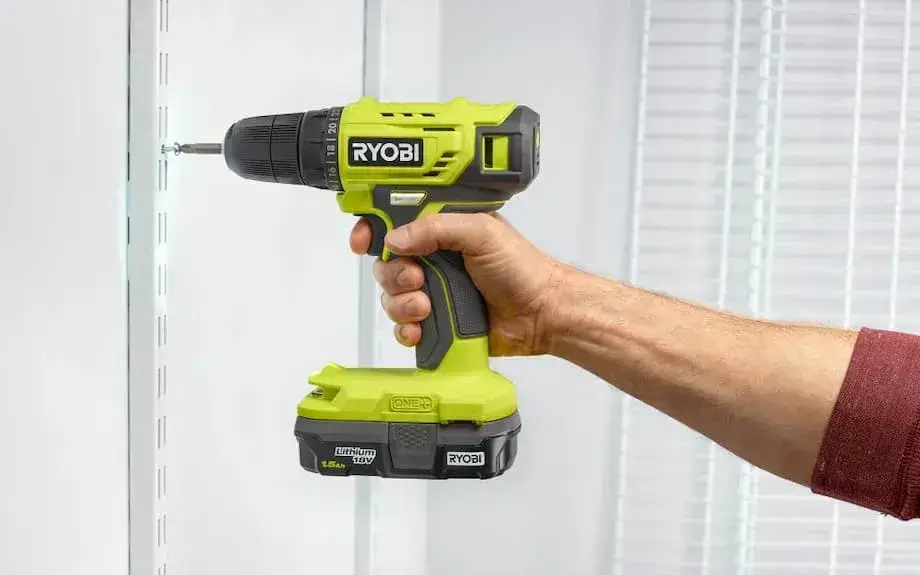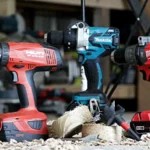Drills are one of the most versatile and useful tools for any DIY enthusiast or professional. They can help you with tasks such as drilling holes, driving screws, sanding, polishing, and more. But with so many types of drills available on the market, how do you choose the right one for your needs? In this article, we will help you answer this question by explaining the main features and benefits of different types of drills, and giving you some tips on how to use them safely and effectively.
The best type of drill for everyday use is a cordless drill. A cordless drill is a battery-powered drill that does not need to be plugged into an outlet. This makes it convenient, portable, and versatile. You can use it anywhere, even in places where there is no power source. A cordless drill can handle most of the common drilling and driving tasks around the house, such as hanging pictures, assembling furniture, installing shelves, and more.
However, not all cordless drills are created equal. There are some factors that you need to consider when choosing a cordless drill, such as:
Power: The power of a cordless drill is measured in volts. The higher the voltage, the more powerful the drill. However, higher voltage also means heavier and more expensive batteries. For everyday use, a 12-volt or 18-volt drill should be sufficient. You can also look for a drill that has a variable speed trigger, which allows you to adjust the speed of the drill according to the material and task.
Battery: The battery of a cordless drill is measured in amp-hours (Ah). The higher the Ah, the longer the battery will last. However, higher Ah also means heavier and more expensive batteries. For everyday use, a 1.5 Ah or 2.0 Ah battery should be enough. You can also look for a drill that has a lithium-ion battery, which is lighter, more durable, and faster to charge than a nickel-cadmium or nickel-metal hydride battery.
Chuck: The chuck is the part of the drill that holds the drill bit or driver bit. The size of the chuck determines the size of the bits that you can use. The most common chuck size is 3/8 inch, which can accommodate most of the standard bits. However, if you need to use larger bits, such as for drilling holes in masonry or metal, you may need a 1/2 inch chuck. You can also look for a drill that has a keyless chuck, which allows you to change the bits quickly and easily without using a tool.
Clutch: The clutch is the part of the drill that controls the torque or the twisting force of the drill. The clutch prevents the drill from overdriving the screws or stripping the screw heads. The clutch has a number of settings that you can adjust according to the material and task. The higher the number, the higher the torque. For everyday use, a drill that has at least 15 clutch settings should be adequate. You can also look for a drill that has a drill mode, which bypasses the clutch and delivers maximum torque for drilling.
Besides a cordless drill, there are other types of drills that you may need for specific purposes, such as:
Hammer drill: A hammer drill is a drill that has a hammering action that helps the drill bit to penetrate hard materials, such as concrete, brick, or stone. A hammer drill is more powerful and faster than a regular drill, but also louder and heavier. You can use a hammer drill for tasks such as installing anchors, bolts, or screws in masonry or concrete.
Impact driver: An impact driver is a drill that has a high-torque action that helps the driver bit to drive screws or bolts into tough materials, such as hardwood, metal, or plastic. An impact driver is more powerful and efficient than a regular drill, but also louder and more expensive. You can use an impact driver for tasks such as building decks, fences, or cabinets.
Rotary tool: A rotary tool is a small and lightweight drill that has a high-speed spinning action that helps the accessory bit to perform various functions, such as cutting, carving, engraving, sanding, polishing, and more. A rotary tool is more versatile and precise than a regular drill, but also less powerful and durable. You can use a rotary tool for tasks such as crafting, hobby, or repair.
No matter what type of drill you use, you need to follow some safety precautions, such as:
- Wear protective gear, such as gloves, goggles, and earplugs, to prevent injuries from flying debris, dust, or noise.
- Check the drill, the battery, the cord, the chuck, and the bits for any damage or wear before using them. Replace or repair any faulty parts.
- Use the right type, size, and quality of bits for the material and task. Do not use dull, bent, or broken bits.
- Secure the workpiece with clamps or a vise to prevent it from moving or slipping while drilling.
- Do not apply excessive pressure or force on the drill or the bit. Let the drill do the work and guide it gently and steadily.
- Do not overheat the drill or the bit. Stop and let them cool down periodically.
- Do not leave the drill unattended or in the reach of children or pets. Store the drill and the bits in a safe and dry place.
Drills are essential tools for any home improvement project or professional job. By choosing the right type of drill for your needs and using it properly and safely, you can accomplish many tasks with ease and efficiency. We hope this article has helped you to understand what type of drill do you need for everyday use and how to use it. Happy drilling!




